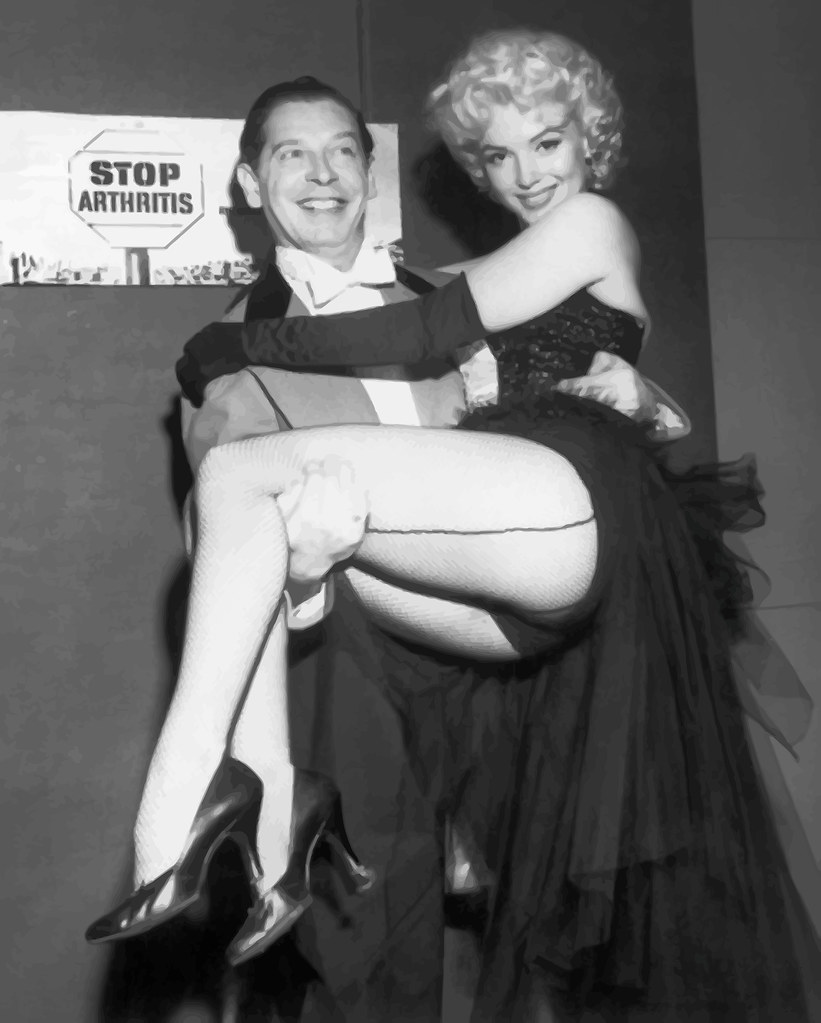
Charlie Sheen’s financial trajectory stands as one of Hollywood’s most striking examples of extreme fluctuation, moving from the pinnacle of television earnings to a reported fraction of his former wealth. Once commanding an astonishing $1.8 million per episode for “Two and a Half Men,” securing his place as the highest-paid male actor in American television history, Sheen accumulated an estimated peak net worth of $150 million.
However, this stratospheric success was closely followed by a well-documented series of personal struggles, lavish spending, and legal battles that ultimately led to a dramatic financial implosion. The narrative of his fortune is a complex tapestry woven with threads of unprecedented career milestones, significant financial decisions, and highly publicized controversies that profoundly altered his economic landscape.
This in-depth analysis will meticulously trace the meteoric rise of Charlie Sheen’s career, dissecting the specific events and choices that contributed to his colossal financial downfall. We will also examine his ongoing journey to rebuild both his life and professional standing, providing a clear, factual breakdown of the forces that shaped his net worth from its peak to its present-day estimate of $3 million.
1. **Early Life and Hollywood Bloodlines**
Charlie Sheen, born Carlos Irwin Estévez on September 3, 1965, in New York City, was destined for a life immersed in the entertainment industry. As the youngest son of the acclaimed actor Martin Sheen and artist Janet Templeton, his upbringing was steeped in the world of film and performance. His siblings, Emilio, Ramón, and Renée, also pursued careers in acting, establishing a strong family presence in Hollywood long before Charlie’s individual breakout.
Raised primarily after his family relocated to Malibu, California, Sheen attended Santa Monica High School, where he developed an early, fervent passion for both baseball and acting. This dual interest suggested a vibrant and multifaceted talent, even in his formative years. However, a noted lack of academic commitment would see his high school career conclude prematurely with an expulsion just weeks before graduation, a foreshadowing perhaps of the unconventional path his life would take.
Even prior to achieving widespread recognition, Sheen gained early exposure to the film industry. He made appearances in his father’s projects and collaborated on homemade shorts with childhood friends, notably Rob Lowe and Chris Penn. These early experiences provided him with an invaluable, organic immersion into the craft, signaling the beginning of his complicated yet undeniable love affair with the screen and solidifying the foundational connections that would prove instrumental in his ascent.
Read more about: Yvonne Strahovski’s Seriously Head-Turning Transformation: From Aussie Roots to Hollywood Royalty, You Won’t Believe Her Journey!

2. **Rise to Fame in Film and Television**
Sheen’s official breakout role arrived in 1984 with the film “Red Dawn,” marking his formal entry into mainstream Hollywood. This initial success was swiftly followed by a rapid succession of hits that became emblematic of 1980s cinema, firmly establishing him as a prominent young actor. His performances in Oliver Stone’s critically acclaimed “Platoon” and “Wall Street” garnered significant praise, demonstrating his range and gravitas.
For his role as Bud Fox in the 1987 financial drama “Wall Street,” Sheen earned approximately $500,000, an early indicator of his burgeoning market value. He further cemented his status as a bona fide movie star with memorable roles in popular films such as “Major League,” “Young Guns,” and “Hot Shots!.” These diverse roles showcased his versatility, from serious dramatic acting to comedic timing, making him a household name through the late 1980s and 1990s.
By the early 2000s, Sheen began a pivotal transition to television, accepting the challenging role of the new lead in “Spin City” after Michael J. Fox departed due to health issues. Stepping into a role previously held by a beloved actor is rarely easy, yet Sheen successfully made the character his own, a feat recognized with a Golden Globe award for his performance. This triumph paved the way for his most financially lucrative television venture.
In 2003, CBS offered Sheen the role of Charlie Harper in “Two and a Half Men,” a part widely acknowledged to be loosely inspired by his own off-screen lifestyle. This casting proved to be a perfect fit, blending his public persona with the character’s charm and irreverence. The show quickly became a massive hit, and Sheen’s performance resonated deeply with audiences, laying the groundwork for an unprecedented period of financial success that would redefine celebrity earnings in television.
Read more about: The Unfiltered Glamour: Cardi B’s Most Talked-About Fashion Moments, Pop Culture Reigns, and Family Ventures
3. **Peak Earnings as TV’s Highest-Paid Actor**
Charlie Sheen’s role as Charlie Harper in “Two and a Half Men” did not merely make him a household name; it propelled him to the zenith of television stardom and financial success. During his tenure on the hit sitcom, Sheen ascended to the title of the highest-paid actor on American television, dominating both ratings and headlines. His base salary alone reached an astonishing $1.25 million per episode, a figure that set a new benchmark for actor compensation in the industry.
However, his earnings extended far beyond this base pay. With lucrative syndication deals factored into his contract, Sheen’s per-episode earnings climbed even higher, nearing an unprecedented $2 million. This comprehensive compensation structure meant that during the peak of his run on “Two and a Half Men,” he was bringing in an estimated upwards of $48 million per year, an income stream almost unheard of for a television actor at the time.
This period marked the absolute financial peak of Charlie Sheen’s career. Between his substantial base salary and the highly profitable backend points from syndication, his net worth reportedly swelled to an estimated $150 million. This staggering fortune made him the envy of his peers and a symbol of Hollywood’s top-tier earning potential, showcasing how shrewd contract negotiations combined with immense popularity could yield incredible wealth.
Yet, this immense success, as noted by his ex-wife, actress and former model Denise Richards, came at a significant personal cost. She later told the New York Post that the fame and fortune derived from “Two and a Half Men” ultimately “led to him not being sober” and transformed him into “someone she didn’t recognize.” This perspective offers a stark reminder that even at the pinnacle of financial achievement, personal struggles can quietly, or sometimes openly, begin to undermine the very foundations of one’s life and career.

4. **The “Two and a Half Men” Firing and its Aftermath**
Despite achieving unparalleled financial success and cultural omnipresence with “Two and a Half Men,” Charlie Sheen’s tenure on the show came to an abrupt and highly publicized end in 2011. This dramatic turning point was precipitated by a bitter and very public feud with the series creator, Chuck Lorre. The public nature of their dispute, marked by a string of negative comments and erratic behavior from Sheen, created a media spectacle that ultimately proved unsustainable for the production.
In March 2011, Sheen was officially fired from the sitcom, a decision that sent shockwaves through Hollywood and significantly impacted his financial standing. His dismissal meant an immediate cessation of his multi-million dollar per episode salary and future syndication earnings, costing him tens of millions in lost income. This event wasn’t merely a career setback; it represented a critical inflection point, initiating a dramatic financial implosion from which he would struggle to recover.
The firing not only severed his most lucrative income stream but also severely damaged his reputation within the entertainment industry. The widely reported controversies and his public meltdowns made him a divisive figure, leading to uncertainty about his future employability. This moment highlighted the precarious balance between unprecedented fame and the stringent demands of professional conduct, demonstrating how quickly a fortune can begin to unravel under public scrutiny and contractual breaches.
As the curtain fell on his “Two and a Half Men” era, the true aftermath of the firing began to manifest. It marked the beginning of extensive legal battles, substantial financial obligations, and a scramble to find new opportunities that could match his previous earning power. The decision by CBS and Warner Bros. Television to remove their highest-paid star underscored the severity of the situation and the immense financial and reputational cost associated with it, paving the way for a drastically altered financial landscape for Sheen.
Read more about: Talk About Drama! The 10 Most Shocking TV Set Feuds That Rewrote Our Favorite Shows
5. **The “Anger Management” Experiment**
Following his highly publicized firing from “Two and a Half Men,” Charlie Sheen quickly sought to re-establish his career and income, landing a deal with FX to star in the sitcom “Anger Management,” which aired from 2012 to 2014. This new venture was an attempt at a comeback, but it featured a unique and ambitious financial structure that differed significantly from traditional television contracts. The agreement was a rare “10/90 deal,” designed to incentivize performance and potential long-term profits.
The innovative contract granted Sheen an unusually large ownership stake, specifically 30% of the syndication profits. The premise was that if the show met certain ratings targets during its initial run, FX would order an additional 90 episodes, thereby triggering the potentially lucrative backend deal. This arrangement offered Sheen the opportunity to net another fortune, theoretically placing him in a position to recover a substantial portion of the wealth lost from his previous show.
“Anger Management” did manage to reach its target of 100 episodes, a significant achievement for any cable series. However, despite reaching this numerical milestone, the show ultimately fell short of the robust ratings expectations that were necessary to generate substantial syndication profits. The series, while a steady performer for FX, never achieved the widespread appeal or the syndication success that would have made Sheen’s backend deal truly bountiful.
Consequently, Charlie Sheen received little return on the ambitious contract, failing to create the second massive fortune he had hoped for. While he earned a consistent salary during its run, the grand promise of the 30% syndication ownership largely went unfulfilled. This outcome underscored the unpredictable nature of television economics, even for a star of Sheen’s magnitude, and served as a clear indicator that rebuilding his previous financial heights would be a far more arduous task than initially anticipated.
6. **Beyond TV: Film Residuals and Endorsements**
While Charlie Sheen’s most significant earnings came from his unparalleled success in television, particularly during his “Two and a Half Men” era, his financial portfolio also benefited from other substantial income streams. For years, he continued to collect millions from film residuals on long-running hits that defined earlier stages of his career. Iconic movies such as “Wall Street,” “Major League,” and “Hot Shots!” provided a steady, albeit declining, stream of income, reminding us of his enduring cinematic legacy.
Beyond his acting roles, Sheen also ventured into the world of endorsements, leveraging his celebrity status to partner with various brands. He lent his name and image to major companies like DirecTV, Hanes, and Pepsi, capitalizing on his widespread recognition. These endorsement deals added millions to his wealth, diversifying his income sources beyond traditional acting fees and demonstrating his commercial appeal across different sectors of the market.
However, some of his endorsement activities were not without controversy. Notably, after publicly revealing his HIV status in 2015, Sheen controversially partnered with Lelo Hex condoms. While this collaboration aimed to raise awareness and promote safe sex, it also highlighted how his personal life and health disclosures could be intertwined with his commercial endeavors, sometimes in unexpected ways. Such deals, while financially beneficial, often came with an element of public discourse.
In total, Sheen’s lifetime earnings from his extensive acting career, including film and television roles, coupled with his various endorsements and licensing agreements, reportedly surpassed $150 million. This figure represents the aggregate wealth generated over decades in the spotlight. Yet, as the subsequent chapters of his financial story reveal, the sheer volume of money he brought in was often matched, if not outpaced, by the speed with which it was spent and lost, indicating challenges in wealth preservation despite significant accumulation.
7. **The Cost of Controversy: Legal Battles and Child Support**
Even with his incredible earnings from a prolific career, Charlie Sheen’s fortune rapidly unraveled, largely due to a relentless barrage of personal controversies and the substantial financial obligations they incurred. A significant drain on his assets stemmed from his complex marital history and subsequent divorce settlements. In 2011, he was in the midst of a bitter divorce from his third wife, Brooke Mueller, with whom he shares twin sons, leading to substantial child and spousal support payments.
The combined child and spousal support payments to his ex-wives, Brooke Mueller and Denise Richards, reportedly exceeded $110,000 a month. This staggering recurring expense became a continuous outflow from his remaining fortune, creating immense financial pressure. By 2016, the situation had become so dire that Sheen was compelled to file a request with the court to reduce these payments, citing a dramatic and unsustainable drop in his income, a clear signal of his deteriorating financial health.
Court filings from this period further painted a stark picture of his financial distress, revealing that Sheen was approximately $12 million in debt. A significant portion of this debt was directly tied to mortgages on multiple luxury homes, indicative of an extravagant lifestyle that had become increasingly difficult to maintain. The ongoing legal fees associated with these divorces and other disputes also contributed significantly to the erosion of his wealth, adding another layer of financial burden.
Beyond the direct costs of child and spousal support, legal fees became a constant, heavy expense. These fees were not only for divorce proceedings but also for various other disputes and challenges that arose from his public life and personal decisions. This continuous financial bleed, coupled with other expenditures, created an unsustainable situation where even a fortune of $150 million could swiftly diminish, highlighting the profound impact of personal choices on long-term financial stability in the public eye.
Read more about: Inside the Storm: A Complete Timeline of Kevin Costner and Christine Baumgartner’s Contentious 18-Year Marriage and High-Stakes Divorce
8. **The True Cost of Extravagance: Lifestyle and Hidden Expenses**
Beyond the well-documented legal and marital obligations, Charlie Sheen’s rapid financial unraveling was profoundly exacerbated by a lifestyle marked by unchecked extravagance and substantial hidden expenditures. During his peak earning years, and even as his fortune began to wane, Sheen maintained an opulent existence that proved unsustainable. Reports indicate that at one point, he was spending an estimated $250,000 a month merely to maintain his lavish Beverly Hills mansion, a figure that illustrates the sheer scale of his daily overhead.
Adding to this extraordinary burn rate were significant sums disbursed for personal indulgences. Financial experts monitoring celebrity wealth have highlighted practices such as paying off adult film stars, sometimes to the tune of $30,000 at a time. Perhaps one of the most substantial and previously undisclosed drains involved the private settlement of cases related to his HIV diagnosis; Sheen admitted spending an astounding $10 million over four years to keep his medical condition private, settling related cases out of court.
These continuous financial outflows, comprising lavish living costs, significant private payouts, and the immense cost of maintaining privacy around personal health matters, provide critical insight into how a fortune of $150 million could be so dramatically depleted. It underscores that while peak earnings were unprecedented, the lack of sustainable financial management and the sheer volume of personal expenditures created an inevitable trajectory toward financial distress.
9. **The Real Estate Rollercoaster: From Mansions to Malibu Rent**
Charlie Sheen’s journey through real estate ownership serves as a compelling subplot in his broader financial narrative, mirroring the peaks and valleys of his career. In 2006, at his peak, he purchased a sprawling 9,000-square-foot mansion within the exclusive Mulholland Estates in Beverly Hills for $7.2 million. This property, equipped with a screening room and expansive grounds, became emblematic of his high-flying persona and the backdrop for his post-‘Two and a Half Men’ era parties.
However, this mansion, and indeed many of his other property dealings, concluded with significant financial losses. After an initial attempt to sell for $10 million in 2018, it ultimately sold for $6.6 million in 2020, resulting in a substantial loss on the initial purchase price. This trend of acquiring and divesting properties at a deficit was not isolated; Sheen engaged in multiple transactions within the same estates, frequently selling at a financial disadvantage, like one home bought for $7 million and sold for $6.6 million.
The culmination of these real estate missteps saw Sheen shed most of his high-end properties. In a stark reflection of his altered financial landscape, he briefly moved in with his parents. As of 2022, his living situation transitioned to renting a modest home in Malibu for approximately $16,000 per month. This progression from multi-million dollar ownership to rental underscores a profound shift in his financial capacity and lifestyle.
10. **Hidden Generosity: Sheen’s Untold Philanthropic Contributions**
Amidst the widely publicized narratives of Charlie Sheen’s lavish spending and financial struggles, recent revelations from his new documentary have cast a surprising light on a lesser-known aspect of his character: his profound, yet hidden, generosity. These reports indicate that during the zenith of his career on ‘Two and a Half Men,’ Sheen engaged in significant philanthropic activity, anonymously donating between $26 million and $30 million to various charities.
This substantial charitable giving occurred during a period when his income was at its highest, showcasing a dedication to philanthropy that remained largely unacknowledged by the public. Sources close to the actor revealed that Sheen deliberately chose to donate anonymously, motivated by a genuine desire to avoid gaining any fame or public recognition from his contributions, a choice that stands in stark contrast to his often-flamboyant public persona.
The discovery of this extensive philanthropy adds a complex layer to the understanding of Sheen’s financial trajectory. While admirable in its intent and impact, these significant donations undeniably contributed to the reduction of his personal wealth accumulation. It suggests that a considerable portion of his fortune was allocated to causes he believed in, albeit without public fanfare, challenging the simplistic narrative of pure financial mismanagement.
11. **Personal Struggles and Public Revelations: The HIV Diagnosis and More**
Charlie Sheen’s financial narrative cannot be fully understood without acknowledging the profound impact of his personal struggles and highly publicized health revelations. In 2015, Sheen made the courageous public announcement that he was HIV-positive, a diagnosis he had privately managed for four years prior. This disclosure was not only a personal watershed moment but also a significant financial burden, as he later claimed to have spent millions of dollars, specifically $10 million over four years, to keep his HIV status confidential, settling various related cases out of court.
Following his public revelation, Sheen engaged in a controversial partnership with Lelo Hex condoms. While this collaboration aimed to raise awareness about safe sex practices, it also underscored the inextricable link between his personal health disclosures and commercial endeavors. Beyond his health status, Sheen’s personal life was further illuminated by admissions in his new Netflix documentary; he revealed that his well-known history of wild parties with women evolved after he began smoking crack, leading him to pursue romantic relationships with men.
These personal battles and their public unfolding have consistently contributed to the erosion of his wealth, not only through direct costs like settlements and legal fees but also through the broader impact on his reputation and career opportunities. The constant public scrutiny and the sheer financial cost of managing these private aspects of his life underscore the multifaceted challenges he faced, contributing significantly to his dramatic financial decline.
12. **The “Two and a Half Men” Downfall: Beyond Charlie’s Exit**
While Charlie Sheen’s highly publicized firing in 2011 is often cited as the singular catalyst for the decline of ‘Two and a Half Men,’ a more nuanced analysis suggests the show’s unraveling had deeper roots. Many argue that the seeds of its eventual downfall were sown earlier, particularly through the mishandling of the character Jake Harper, portrayed by Angus T. Jones. Jake, initially the ‘half’ in the show’s title, served as its emotional core during early seasons, providing innocence and unpredictability to counter the adult cynicism.
However, as the series progressed, the creative direction for Jake’s character shifted dramatically. Instead of allowing him to evolve into a complex teenager, writers increasingly reduced him to a one-dimensional punchline, relying on lazy gags about his intelligence and appetite. By the time Sheen’s personal issues reached a boiling point, Jake had already been significantly sidelined, diminishing his integral role in the show’s dynamic and emotional resonance.
Ultimately, Jake’s character was entirely written out of the series after Jones publicly denounced its content. This departure, combined with the diminished role of the ‘half,’ effectively collapsed the original premise. In hindsight, the strategic missteps in developing Jake’s arc, rather than solely Sheen’s tumultuous exit, are often viewed as the true turning point that marked the beginning of ‘Two and a Half Men’s’ decline in quality and success.

13. **Current Financial Standing: A $3 Million Reality**
After a career marked by stratospheric earnings and an equally dramatic financial unraveling, Charlie Sheen’s net worth in 2025 presents a stark contrast to his former glory. According to estimates from Celebrity Net Worth, his fortune has plummeted to approximately $3 million. This figure represents a staggering decline from the estimated $150 million he amassed during his peak on ‘Two and a Half Men,’ positioning his financial story as one of Hollywood’s most pronounced cautionary tales.
This current valuation reflects the cumulative impact of years of lavish spending, extensive legal battles, significant child and spousal support payments, and the considerable private costs associated with managing personal health issues. The continuous outflow of capital, coupled with a dramatic reduction in his earning power, has systematically eroded his substantial wealth, leaving a mere fraction of his former fortune.
While the $3 million figure is widely cited, it is important to note that other estimates occasionally place Charlie Sheen’s net worth slightly higher, suggesting figures in the range of $9-10 million in 2025. These differing valuations highlight the inherent complexity of accurately calculating celebrity wealth. Despite discrepancies, the overarching narrative remains consistent: Sheen’s financial standing today is a shadow of its former self, a tangible measure of the consequences of his personal and professional decisions.
Read more about: Sydney Sweeney’s Recent Setbacks: A Deep Dive into ‘Eden,’ ‘Americana,’ and the American Eagle Controversy

14. **Rebuilding a Legacy: Sobriety, Comeback Attempts, and Future Prospects**
Despite the significant financial setbacks and personal turmoil that have defined much of Charlie Sheen’s recent history, his story in 2025 is also one of remarkable resilience and ongoing efforts to rebuild both his life and professional legacy. A pivotal aspect of this resurgence is his commitment to sobriety, a journey he has now steadfastly maintained for the past eight years, forming a critical foundation for any future endeavors.
Professionally, Sheen is actively pursuing a comeback in the entertainment industry. In 2024, he quietly joined a Netflix project, signifying new opportunities for financial recovery and renewed visibility. This move is complemented by the release of his autobiography, ‘The Book of Sheen,’ and a Netflix documentary titled ‘aka Charlie Sheen’ in 2025. One of the most surprising developments is his reunion with former nemesis Chuck Lorre, collaborating on the HBO Max series ‘Bookie’ in 2023–24. This reconciliation hints at a potential professional renaissance and offers a sense of closure.
As Sheen navigates this new chapter, his journey serves as both a cautionary tale regarding financial management and a testament to the possibility of recovery from significant setbacks. His name recognition and acting abilities continue to hold value, suggesting that despite past controversies, his next act might still hold surprises. His ongoing efforts underscore a determined approach to reclaiming his professional standing and securing a more stable financial future, embodying resilience that fellow actor Ryan Reynolds lauded as ‘messy, but human’.
Charlie Sheen’s journey through Hollywood remains one of its most intricate and dramatic sagas, providing a compelling case study in the accumulation, dissipation, and potential rebuilding of immense wealth. From his unparalleled earnings as television’s highest-paid actor to the dramatic erosion of his $150 million fortune, his financial trajectory is a testament to the volatility of celebrity wealth when confronted with personal struggles and significant financial demands. Yet, as he embraces sobriety and pursues new professional avenues, Sheen continues to captivate, embodying both the cautionary lessons of excess and the enduring possibility of reinvention within entertainment. His story serves as a potent reminder that even after the steepest of falls, the narrative of a career and a legacy can still be actively rewritten.














